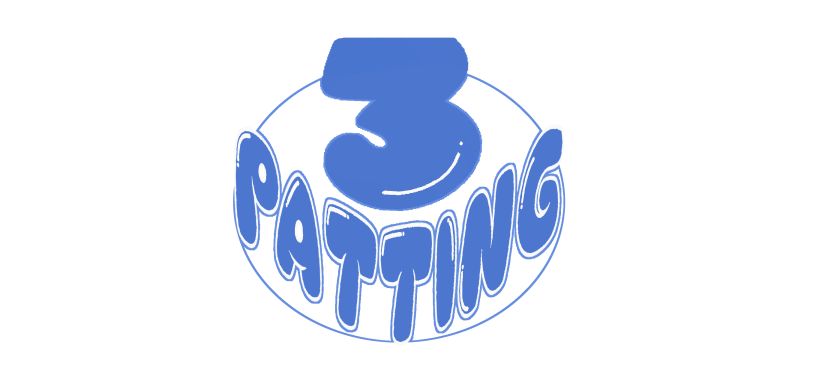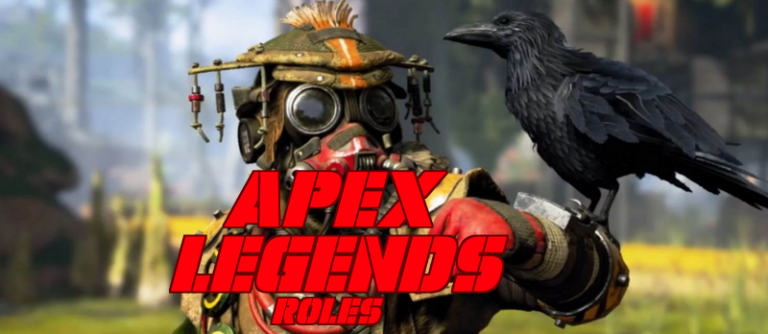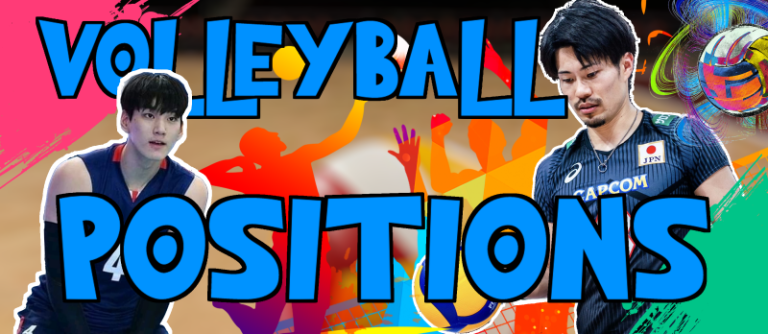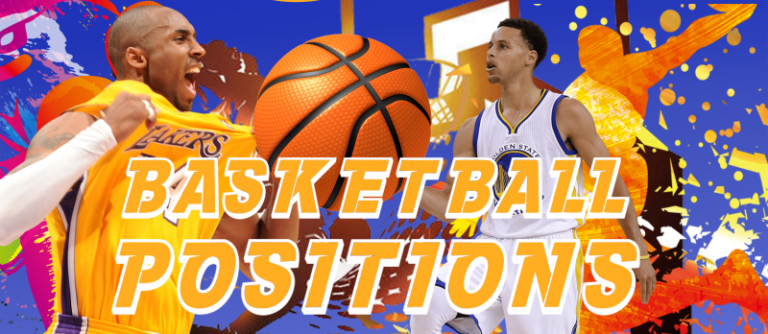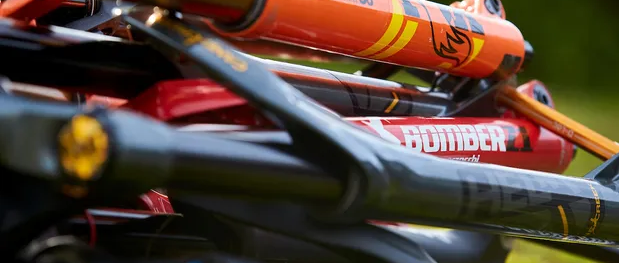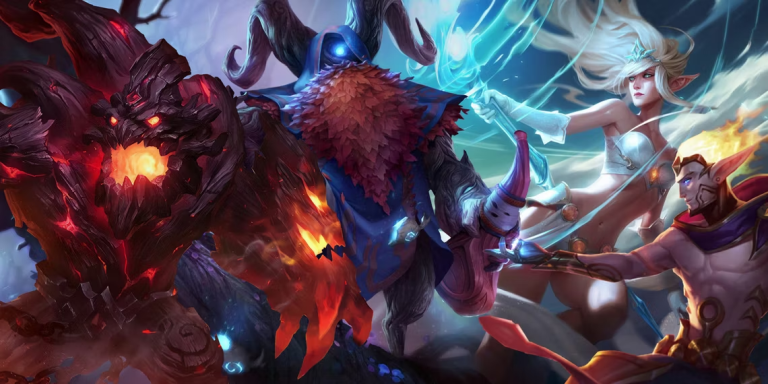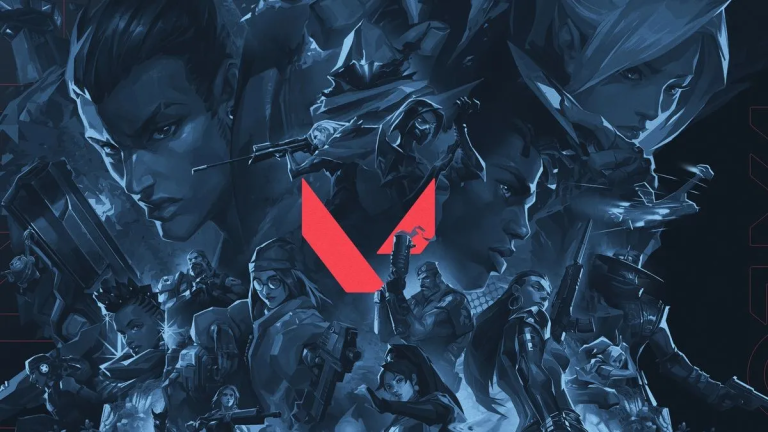League of Legends Roles – Key Strategies for Each Position
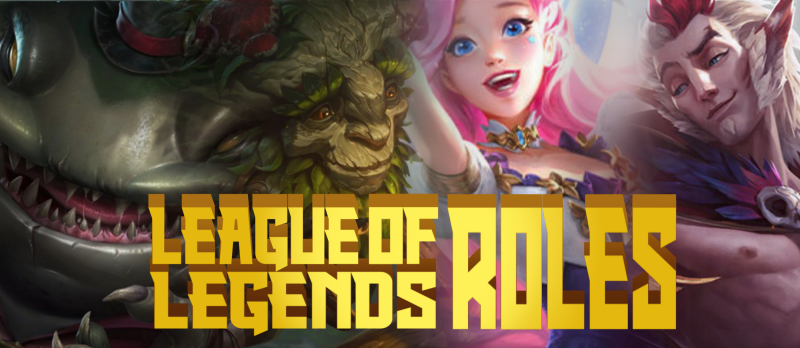
League of Legends, developed and published by Riot Games, was released in 2009 and quickly became a cornerstone of the esports world. This multiplayer online battle arena (MOBA) game has grown from a niche title into a global phenomenon, attracting millions of players and viewers worldwide. As players dive into its complex roles and strategies, they might also explore other games like Teen Patti Stars, showcasing the diverse interests within the gaming community. League of Legends has played a pivotal role in the popularization and legitimization of esports, hosting some of the most-watched tournaments in gaming history, such as the annual League of Legends World Championship. The game’s influence extends beyond the esports community, impacting gaming culture, streaming platforms, and even mainstream media.
In League of Legends, understanding the importance of roles is crucial for success. The game features five primary League of Legends roles: Top Lane, Mid Lane, Jungle, ADC (Attack Damage Carry), and Support. Each role has specific responsibilities and strategic importance within a team. For example, the Top Lane typically involves champions who can sustain damage and control the battlefield, while the Mid Lane is often occupied by high-damage champions who can influence other lanes. The Jungle role focuses on controlling neutral objectives and assisting other lanes, while the ADC and Support roles work together in the Bottom Lane to secure kills and push objectives. Mastery of these roles and effective coordination among team members are essential for achieving victory in League of Legends.
Characteristics of the Top Lane Position
In League of Legends Roles, the top lane position holds a distinct and strategic importance. This role is typically occupied by champions who excel in one-on-one combat and can sustain prolonged periods of isolated play. Understanding the nuances of the top lane is crucial for mastering the dynamics of the game.
Strategic Importance of the Top Lane
The top lane in League of Legends Roles is often considered a solo battleground. This lane is furthest from the action in the early stages of the game, allowing players to focus on farming and outplaying their direct opponent. Top laners must balance aggression with caution, as overextending can lead to ganks from the enemy jungler.
Top laners often play a pivotal role in the late game, where their ability to split-push and draw attention away from key objectives can turn the tide of battle. They must have a keen understanding of map awareness and be able to communicate effectively with their team to coordinate plays.
Additionally, top laners need to be proficient in wave management, understanding when to freeze, push, or slow push the lane. This knowledge allows them to control the tempo of the lane and create opportunities for their team.
- Solo Battleground: The top lane is characterized by one-on-one combat, requiring champions that can handle isolation.
- Farming Focus: Early game farming is critical for top laners to build the necessary items for the late game.
- Map Awareness: Top laners must maintain high map awareness to avoid enemy ganks and coordinate with their team.
- Wave Management: Effective control of minion waves is essential for dictating the pace of the lane.
Explore the intricate strategies of top lane play on our website and enhance your League of Legends Roles expertise.
Champion Selection for Top Lane
Choosing the right champion for the top lane in League of Legends Roles is pivotal. Champions selected for this role often fall into categories such as tanks, bruisers, and split-pushers. Each category brings unique strengths to the game, and understanding these can provide a competitive edge.
- Tanks: These champions are built to absorb damage and initiate team fights. They excel in crowd control and can disrupt enemy formations.
- Bruisers: A mix of damage and durability, bruisers can engage in prolonged fights and withstand significant punishment while dealing considerable damage.
- Split-Pushers: These champions specialize in taking down towers and forcing the enemy to respond to their presence, creating opportunities for the rest of the team.
Top lane champions must also consider their matchups. Understanding the strengths and weaknesses of their opponents allows them to choose champions that can counter or mitigate the enemy’s advantages. This strategic aspect of champion selection can often determine the outcome of the lane and influence the broader game.
Bullet Points
- Tanks: Durable champions focused on crowd control and initiation.
- Bruisers: Balanced champions with significant damage and durability.
- Split-Pushers: Specialists in taking down towers and creating map pressure.
- Matchup Knowledge: Understanding opponent strengths and weaknesses is crucial for champion selection.
Download our app for detailed guides on top lane champions and improve your League of Legends Roles performance.
Mastering the top lane in League of Legends Roles requires a deep understanding of champion mechanics, strategic wave management, and effective communication. By focusing on these aspects, players can significantly impact their team’s success and achieve higher rankings. Visit our site for more in-depth strategies and tips to dominate the top lane.
The Unique Responsibilities of the Jungler
Opening Text
In League of Legends Roles, the jungler position carries distinct and critical responsibilities that differentiate it from other League of Legends roles. The jungler operates primarily within the jungle, focusing on objectives, ganking lanes, and controlling the map. Understanding the multifaceted duties of the jungler is essential for mastering this unique role.
Jungle Pathing and Objective Control
Contents
The jungler’s role in League of Legends Roles involves creating and executing an efficient jungle path. This pathing strategy is crucial for maximizing experience and gold gain while maintaining map pressure. Junglers must prioritize neutral objectives, such as the Dragon and Baron Nashor, which provide significant buffs to the team. Securing these objectives can often be a decisive factor in the game’s outcome.
Effective jungle pathing requires knowledge of camp respawn times, enemy jungler location, and optimal routes to gank lanes. By anticipating the enemy’s movements, a skilled jungler can set up ambushes and counter-ganks, providing a substantial advantage to their team.
Additionally, the jungler must balance farming jungle camps with ganking lanes. Successful ganks can lead to kills or summoner spell burns, which alleviate pressure from laners and create opportunities for objective control.
- Efficient Pathing: Developing and executing a strategic jungle path to maximize experience and gold.
- Objective Prioritization: Focusing on key objectives like Dragon and Baron Nashor to provide team buffs.
- Anticipation: Predicting enemy movements to set up ambushes and counter-ganks.
- Balance: Balancing farming jungle camps with ganking lanes to support teammates.
Visit our website for comprehensive guides on mastering jungle pathing and objective control in League of Legends Roles.
Champion Selection for Jungle
Choosing the right champion for the jungle role in League of Legends Roles is pivotal for the team’s success. The champion selected should align with the team’s overall strategy and complement other League of Legends roles. There are several classes of champions that are ideal for the jungle position:
- Tanks: These champions are durable and can absorb a lot of damage, making them excellent for engaging in fights and protecting their teammates. Examples include Sejuani and Zac.
- Assassins: These champions excel at quickly eliminating high-priority targets. They have high burst damage and mobility, making them effective at ganking and dueling. Examples include Kha’Zix and Evelynn.
- Bruisers: These champions combine damage and durability, making them versatile in both offensive and defensive roles. They are often strong duelists and can sustain themselves in extended fights. Examples include Vi and Warwick.
- Mages: These champions provide high magic damage and crowd control, offering a different type of threat to the enemy team. Examples include Elise and Lillia.
Selecting the right class of champion depends on the team’s composition and the game’s overall strategy. Understanding the strengths and weaknesses of each class can help players make informed decisions during champion selection.
Check out our app for the latest tier lists and professional insights on the best jungle champions in League of Legends Roles.
Ganking and Map Presence
Ganking is a pivotal responsibility of the jungler in League of Legends Roles. A successful gank involves the jungler coordinating with laners to attack and defeat the enemy champion. Ganks can create a numerical advantage, allowing the team to push objectives and secure vision control.
Junglers must maintain high map presence, constantly moving between lanes and jungle camps to apply pressure. Effective use of vision wards and communication with teammates enhances map control and helps prevent enemy ganks. The jungler’s ability to adapt to the game’s flow and respond to emerging threats is vital for maintaining team momentum.
Moreover, the jungler’s role includes invading the enemy jungle to disrupt their farming and steal camps. This aggressive strategy can hinder the enemy jungler’s progress and create opportunities for the team to dominate the map.
- Ganking: Coordinating with laners to execute successful ganks and secure kills.
- Map Presence: Maintaining constant movement and pressure across the map.
- Vision Control: Using wards and communication to enhance map control and prevent enemy ganks.
- Invading: Disrupting the enemy jungler by stealing camps and hindering their progress.
Download our app for expert tips on improving your ganking and map presence in League of Legends Roles.
Mastering the jungler role in League of Legends Roles demands strategic thinking, precise execution, and excellent communication. By focusing on efficient jungle pathing, objective control, effective champion selection, and ganking strategies, players can significantly influence the game’s outcome. For more detailed strategies and insights, visit our site and elevate your jungling skills.
Central Position and its Strategic Importance
The central position in League of Legends Roles is pivotal for controlling the flow of the game. Known as the mid lane, this position provides strategic advantages due to its location on the map, enabling the mid laner to impact other lanes and objectives significantly.
Mid Lane Control
The mid lane’s central location allows for efficient movement across the map, making it easier for mid laners to assist in securing objectives such as the Dragon, Rift Herald, and Baron Nashor. Control of the mid lane often translates to map control, as it enables a team to apply pressure on the enemy, control vision, and respond quickly to skirmishes.
Rotational Play
Mid laners have the shortest route to other lanes, allowing them to roam effectively. This roaming potential enables them to gank the top and bottom lanes, providing support to their teammates and creating opportunities for advantageous fights. Effective mid laners leverage this positional advantage to exert influence across the entire map.
Wave Management
Proper wave management in the mid lane can lead to significant advantages. By controlling the minion waves, mid laners can dictate the pace of the game, force enemy laners to respond, and create openings for their own team to capitalize on objectives. This control is essential for maintaining pressure and ensuring that the enemy team is constantly on the defensive.
- Central location allows for efficient map movement.
- Enables control of key objectives such as Dragon and Baron Nashor.
- Facilitates effective roaming to support top and bottom lanes.
- Crucial for wave management to dictate the game’s pace.
- Provides opportunities to apply pressure and create strategic advantages.
Discover the strategic intricacies of the mid lane by visiting our comprehensive guide on League of Legends Roles!
Champion Selection for Mid Lane
Choosing the right champion for the mid lane is crucial for maximizing the position’s strategic importance. Champions that excel in burst damage, crowd control, and mobility are often preferred, as they can effectively dominate the lane and influence other areas of the map.
Popular Mid Lane Champions and Their Roles
Popular mid lane champions in League of Legends Roles are often selected for their ability to control the tempo of the game. These champions bring a variety of skills and attributes that make them suitable for the central position.
Assassins
Assassins are a popular choice for the mid lane due to their high burst damage and mobility. Champions like Zed, Talon, and LeBlanc can quickly eliminate key targets and create opportunities for their team. Their ability to roam and impact other lanes makes them a significant threat on the map.
Mages
Mages are another staple in the mid lane, offering sustained damage and crowd control. Champions like Orianna, Syndra, and Ahri provide strong wave clear and zoning abilities, allowing them to control the mid lane effectively. Their utility in team fights and skirmishes makes them valuable assets throughout the game.
Utility Champions
Some champions are chosen for their ability to provide utility and support to their team. Champions like Galio, Twisted Fate, and Lissandra bring crowd control, global presence, and team fight initiation. These champions excel in setting up plays and providing strategic advantages to their team.
Explore the full list of mid lane champions and their strategic League of Legends roles by downloading our detailed League of Legends Roles guide today!
Champion Selection Strategies
Selecting the right mid lane champion requires understanding the current meta, the enemy team composition, and the specific needs of your team. Flexibility in champion selection can provide a significant edge in both solo queue and competitive play.
Understanding the strategic importance of the central position and the League of Legends roles of popular mid lane champions is crucial for mastering League of Legends Roles. The mid lane serves as the game’s fulcrum, where skilled players can influence the outcome of matches through effective control, roaming, and champion selection. By leveraging these strategies, players can enhance their gameplay and contribute significantly to their team’s success.
ADC: The Primary Damage Dealer Role
The ADC, or Attack Damage Carry, is a critical role within the framework of League of Legends Roles. This position is primarily responsible for delivering sustained damage throughout a match, especially during the late game. ADCs typically position themselves in the bottom lane of the map and rely heavily on both their basic attacks and abilities to contribute to their team’s damage output.
Core Responsibilities
The ADC role is crucial in securing objectives and winning team fights. The following are the main responsibilities of the ADC:
- Sustained Damage Output: The ADC is tasked with dealing consistent damage over time. They generally have high damage potential but are also vulnerable due to their relatively low health and defensive capabilities.
- Objective Control: ADCs are essential in taking down key objectives such as turrets, dragons, and Baron Nashor. Their ability to deal high damage quickly is pivotal in these scenarios.
- Positioning: Proper positioning is vital for an ADC. They must stay at the backline during engagements to avoid enemy crowd control and high damage threats while maximizing their own damage output.
- Farm Efficiency: ADCs need to accumulate gold efficiently through last-hitting minions. Farming well in the early game is crucial for building the necessary items to become a significant threat later in the game.
- Synergy with Support: The ADC relies on their support player to create opportunities and protect them. Effective communication and coordination with the support are essential for success.
Key Characteristics
- High Damage Output: Focuses on maximizing damage through basic attacks and specific items.
- Vulnerability: Often has lower health and defensive capabilities, making positioning crucial.
- Item Dependency: Relies on acquiring specific items to reach full damage potential.
CTA: Explore our comprehensive guide on how to master the ADC role and improve your gameplay. Visit our website for detailed strategies and tips.
Top ADC Champions and Their Playstyles
The ADC League of Legends roles encompasses a variety of champions, each with distinct playstyles and strengths. Here are some of the most prominent ADC champions in League of Legends Roles:
Popular ADC Champions
- Jhin: Known for his unique attack mechanics and high burst damage. Jhin’s fourth shot is critical for finishing off targets, and his abilities revolve around precision and critical hits.
- Kai’Sa: A versatile ADC who excels in both physical and magic damage. Kai’Sa’s ability to adapt her damage output based on her items and skill upgrades makes her a flexible choice.
- Miss Fortune: Famous for her area-of-effect damage with her ultimate ability, Bullet Time. Miss Fortune can deal substantial damage in team fights and clear waves efficiently.
- Ezreal: A mobile ADC who relies on skill shots and his high mobility to stay safe while dealing damage. Ezreal’s abilities allow him to engage from a distance and avoid damage.
- Vayne: A late-game powerhouse known for her high damage output and mobility. Vayne’s role in the late game is to eliminate key targets and leverage her true damage for effective kills.
Playstyles
- Burst Damage: Champions like Jhin and Miss Fortune focus on dealing high damage quickly during key moments.
- Sustained Damage: ADCs such as Kai’Sa and Ezreal rely on continuous damage output and positioning to maximize their effectiveness over extended fights.
- Mobility: Champions like Ezreal and Vayne use their mobility to avoid damage and position themselves advantageously in fights.
CTA: Discover which ADC champion suits your playstyle. Download our app for in-depth champion guides and strategic tips tailored to your needs.
The role of ADC in League of Legends Roles is integral to a team’s success, requiring a combination of strategic positioning, efficient farming, and effective communication with the support role. By understanding the unique responsibilities and exploring the diverse ADC champions, players can enhance their gameplay and contribute significantly to their team’s victories.
The Support’s Crucial Role in Aiding the Team
In League of Legends, the Support role is integral to the overall success of a team. Although often overshadowed by other roles such as ADC (Attack Damage Carry) or Mid Lane, the contribution of a Support champion is crucial for the strategic execution and coordination required to win matches. The Support’s primary focus is not on securing kills or dealing high damage but rather on providing essential benefits that enhance the performance of the entire team.
Overview of Support Responsibilities
The responsibilities of a Support champion in League of Legends Roles include several key functions aimed at strengthening the team:
- Protecting Allies: Supports often possess abilities that shield, heal, or otherwise protect their teammates. Effective positioning and timely use of these abilities can mitigate damage and provide vital defensive support in skirmishes and team fights.
- Providing Vision Control: Vision is crucial in League of Legends Roles for making informed decisions. Supports are typically responsible for placing wards and maintaining vision control over critical map areas. This helps prevent enemy ambushes and provides safety for the team.
- Engaging and Disengaging: Many Support champions have crowd control abilities that can initiate or disengage from fights. Proper use of these abilities can alter the course of battles, either by catching out enemies or ensuring a safe retreat.
- Peeling for Carries: “Peeling” involves protecting high-damage dealers like the ADC from enemy threats. Supports need to position themselves to block incoming attacks and absorb damage, ensuring their carries can operate effectively.
- Setting Up Kills: Supports also play a role in creating kill opportunities for their team. By using crowd control and coordinating with the ADC or other damage dealers, supports can facilitate kills and secure objectives.
Tactical Implications of the Support Role
The strategic importance of the Support role extends to various team-wide strategies within League of Legends Roles:
- Lane Control: During the laning phase, the Support collaborates with the ADC to control the lane. This involves zoning enemies, securing farm, and managing wave positioning to benefit the team.
- Objective Control: Supports are key to controlling objectives such as Dragon and Baron. Their ability to place wards and provide vision around these objectives aids the team in making strategic decisions and securing crucial buffs.
- Map Awareness: Maintaining vision and map awareness is a vital part of the Support role. By keeping track of enemy movements and providing information, supports help their team avoid ganks and prepare for incoming threats.
Various Champion Classes Viable for the Support Role
Support champions come in diverse classes, each providing distinct benefits and playstyles. Understanding these classes helps players choose the right Support champion to complement their team’s strategy within League of Legends Roles.
Catcher Supports
Catcher Supports are designed to engage and disrupt enemies. They excel at initiating fights and creating opportunities for their team through crowd control and mobility.
Characteristics:
- Engagement Tools: Catcher Supports have abilities that allow them to engage enemies, often through high mobility or crowd control.
- Disruption: They can disrupt enemy formations and create space for their team by catching out key targets.
- Mobility: Many Catcher Supports have mobility tools that help them reposition quickly and adapt to changing fight dynamics.
Examples:
- Rakan: Rakan’s abilities include shielding, healing, and crowd control. His ultimate, The Quickness, can charm enemies and provide protection for his team, making him a versatile Catcher Support.
- Bard: Bard’s unique abilities focus on map-wide impact and crowd control. His ultimate, Tempered Fate, can put enemies to sleep, setting up opportunities for his team.
Enchanter Supports
Enchanter Supports focus on providing healing, shielding, and utility to their team. They enhance the survivability and effectiveness of their allies through their supportive abilities.
Characteristics:
- Healing and Shielding: Enchanter Supports often have abilities that heal or shield their allies, improving their durability in fights.
- Utility: They provide utility through buffs and debuffs, enhancing the performance of their carries and disrupting enemy plans.
- Backline Positioning: Enchanter Supports generally remain in the backline, using their abilities to support their team while avoiding direct engagement.
Examples:
- Renata Glasc: Renata Glasc provides a range of utility with her abilities, including shields and crowd control. Her ultimate, Hostile Takeover, can disrupt enemy formations and turn the tide of fights.
- Milio: Milio’s abilities focus on healing and providing utility. His ultimate, Breath of Life, can heal and cleanse allies, offering significant support in team fights.
Vanguard Supports
Vanguard Supports are characterized by their strong frontline presence and ability to initiate fights. They are typically durable champions who can absorb damage and lead engagements.
Characteristics:
- Frontline Durability: Vanguard Supports have high health and defensive stats, allowing them to withstand significant damage.
- Initiation: They excel at initiating fights and creating opportunities for their team through their durability and crowd control.
- Crowd Control: Vanguard Supports often possess crowd control abilities that can disrupt enemy formations and protect their team.
Examples:
- Nautilus: Nautilus provides a robust frontline with his crowd control and initiation abilities. His hook and area-of-effect crowd control make him a powerful Vanguard Support.
- Maokai: Maokai offers strong initiation and crowd control with his abilities. His Sapling Toss and Twisted Advance allow him to disrupt enemies and provide substantial frontline presence.
Warden Supports
Warden Supports are designed to protect their allies and control the battlefield. They often have abilities that enhance their team’s survivability and manage crowd control.
Characteristics:
- Protection: Warden Supports focus on protecting their allies, often through shields, heals, or other defensive tools.
- Crowd Control: They typically have crowd control abilities that can manage enemy positioning and protect their team.
- Defensive Play: Warden Supports are often positioned to absorb damage and mitigate threats to their carries.
Examples:
- Braum: Braum provides protection with his shield and crowd control abilities. His passive, Concussive Blows, and ultimate, Glacial Fissure, can significantly disrupt enemy attacks and protect his team.
- Tahm Kench: Tahm Kench offers a unique form of protection with his Devour ability, which can save allies from danger and provide crowd control with his Tongue Lash and Rupture abilities.
Artillery Mages
Artillery Mages are known for their long-range damage and zoning abilities. They can deal significant damage from a distance and provide area control through their abilities.
Characteristics:
- Long-Range Damage: Artillery Mages can deal high damage from a safe distance, making them effective in sieging and team fights.
- Zoning Abilities: They often have abilities that control space, making it difficult for enemies to engage or escape.
- Area Control: Artillery Mages excel at area control, using their abilities to manage enemy movements and protect their team.
Examples:
- Hewi: Hewi’s abilities provide substantial damage and area control. His long-range spells can deal significant damage from a distance and manage enemy positioning.
- Vel’Koz: Vel’Koz specializes in long-range damage and zoning. His abilities, including his ultimate, Life Form Disintegration Ray, offer high damage output and control over team fights.
Burst Mages
Burst Mages focus on delivering high damage in short bursts. They are effective at quickly eliminating key targets and can turn the tide of fights with their explosive damage output.
Characteristics:
- High Burst Damage: Burst Mages can deal significant damage in a short period, making them effective at quickly taking down enemies.
- High Skillshot Reliance: They often rely on skillshots to maximize their damage, requiring precise aim and positioning.
- Explosive Impact: Burst Mages can change the outcome of fights with their ability to quickly eliminate high-value targets.
Examples:
- Seraphine: Seraphine provides high burst damage and utility with her abilities. Her crowd control and area damage can decisively impact fights and provide significant support.
- Zoe: Zoe’s abilities offer high burst damage and disruptive potential. Her skillshots can quickly eliminate enemies and create opportunities for her team.
Champion Selection for the Support Role
Selecting an appropriate Support champion is crucial for maximizing a team’s effectiveness within League of Legends Roles. The choice should align with the team’s composition, the enemy’s strengths, and the overall strategy. Key factors to consider include:
- Team Composition: Choose a Support champion that complements the team’s composition. For example, pairing a tank Support with a high-damage ADC can create a strong synergy between the frontline and backline.
- Enemy Team: Consider the enemy team’s composition and select a Support champion that can counter their strengths. For instance, choosing a crowd control-heavy Support can help manage enemy threats effectively.
- Playstyle: Select a Support champion that fits the player’s preferred playstyle, whether it’s focusing on tankiness, providing healing, or dealing damage.
The Support role in League of Legends Roles plays a crucial part in shaping the outcome of matches. Support champions are vital for protecting allies, providing vision control, and enabling strategic engagements. Understanding the different classes of Support champions and their unique abilities within League of Legends Roles allows players to make informed decisions and contribute effectively to their team’s success. Whether playing as a Catcher, Enchanter, Vanguard, Warden, Artillery Mage, or Burst Mage, the Support role is essential for achieving victory in the game.
Explore the diverse world of League of Legends Roles and discover how different Support champions can influence your team’s strategy. Visit our site for more detailed information on each role and champion class.

